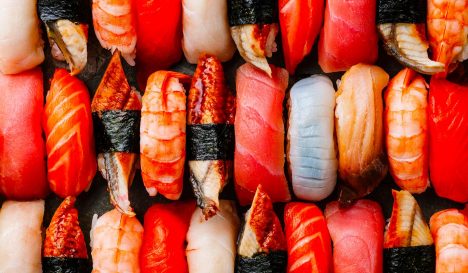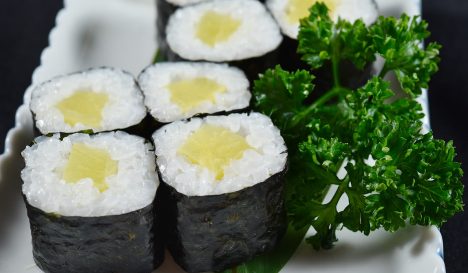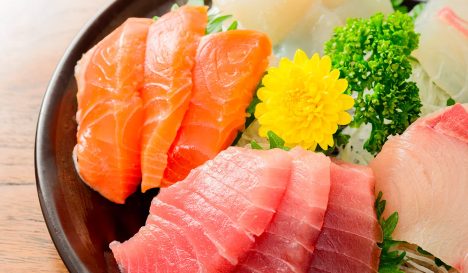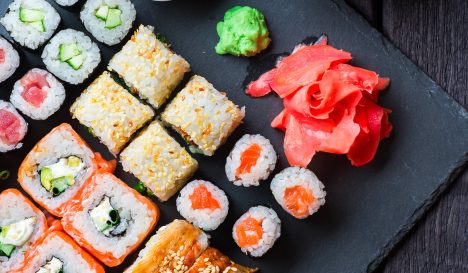Gunkan
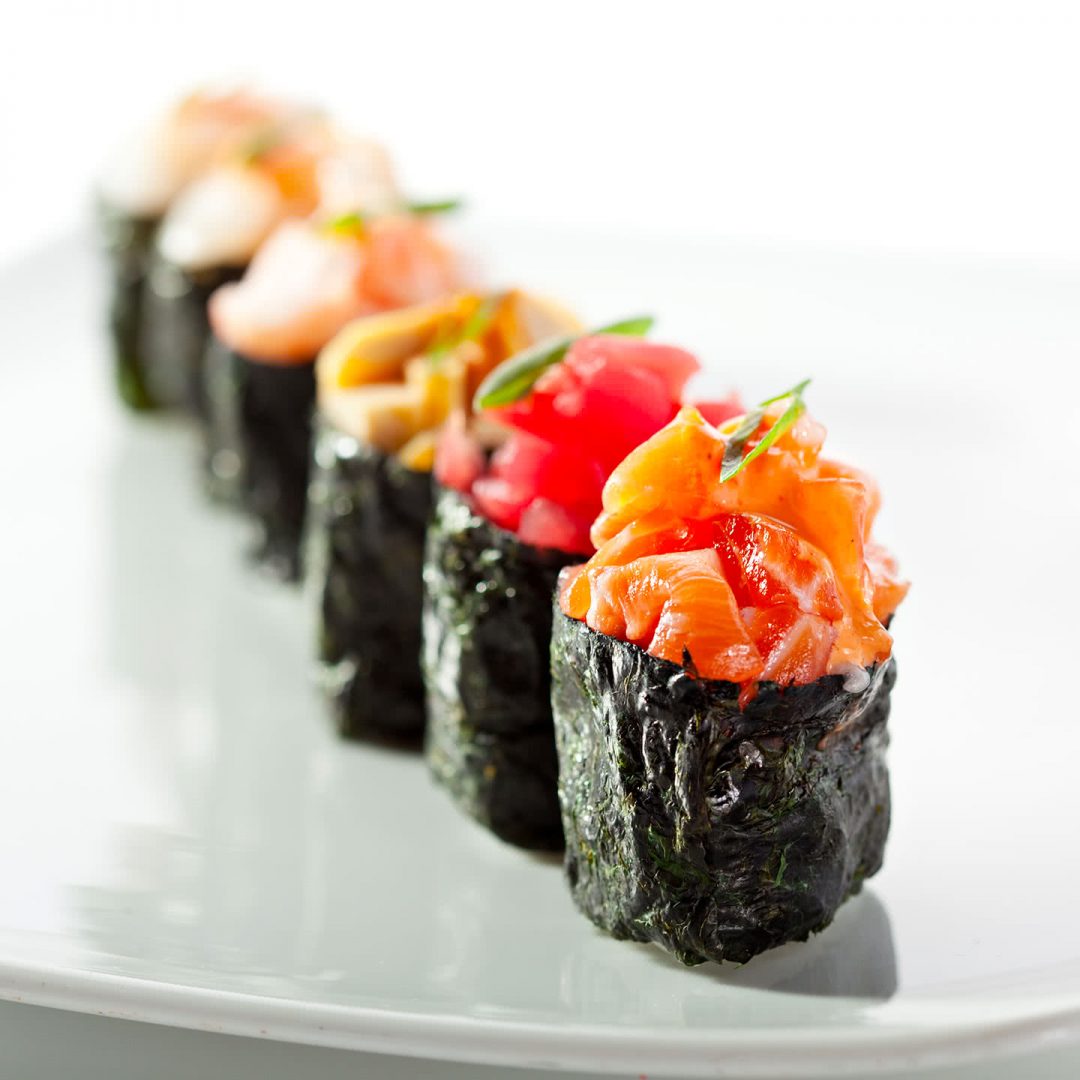
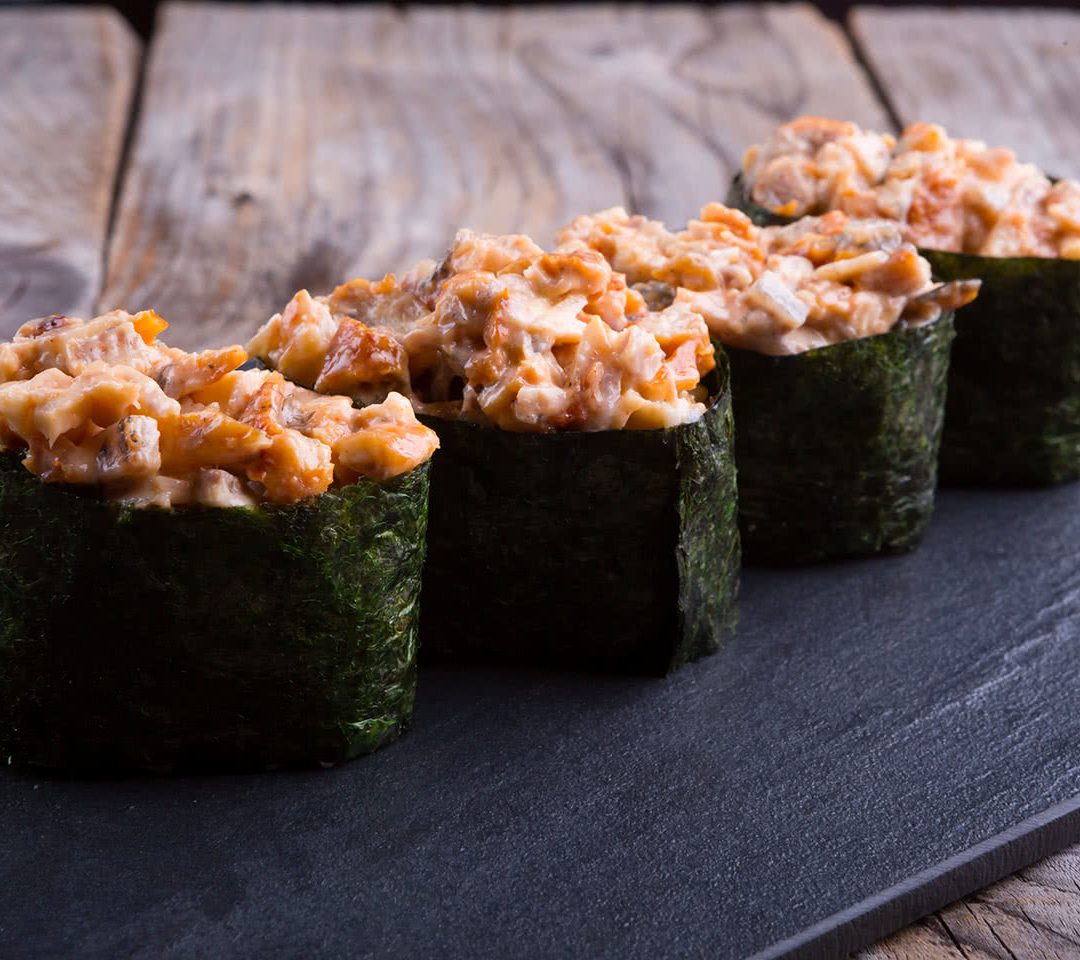
Gunkan
-
Kitchen Japanese cuisine
-
Basis Rice
-
Dish type Side dish
-
For who Small appetites
What is gunkan
Gunkan (pronounced: ghoon-khahn) means war boat and is also called gunkan maki. It is a special form of nigirizushi and is shaped by hand, just like nigiri. Gunkan are “boat-shaped” cubes of sushi rice wrapped in a tall strip of seaweed to create a bowl that can be filled with a topping.
Gunkan is perfect for nigiri toppings that won’t stick to rice on their own, like salmon eggs (ikura nigiri), crab (kani nigiri), sea urchin (uni nigri) or seaweed. Gunkan was conceived in 1941 in a legendary sushiya (sushi restaurant) called Kyubey, in the Ginza district of Tokyo. Since then, the number of suitable toppings for nigirizushi has increased considerably. The restaurant still exists, so if you ever end up in Tokyo, you know where to go!
In addition to traditional toppings, you can find more adventurous variations of gunkan in restaurants outside of Japan. What do you think of gunkan stuffed with quail eggs, mushrooms with mayonnaise or wagyu beef tartare? Instead of nori, gunkan is also wrapped with thin strips of cucumber, zucchini or smoked salmon by some chefs.
Did you know
Eating at a real sushi restaurant, a sushiya, can be nerve-racking. The environment is formal and the chef is directly in front of you, watching as you taste his creations. In a good sushiya sushi is served per piece so that it can be eaten ultra-fresh and immediately after being made. Japanese people do not often visit sushiyas. Fortunately, there are also other restaurants and takeaway tents that serve good sushi. The Japanese have also been eating kaitenzushi (conveyor belt sushi) for decades.
How to make gunkan
Cylinders of hand-formed sushi rice are wrapped with a strip of nori (seaweed) about four centimetres high- about an inch higher than the rice. This creates a sort of container on top of the rice into which the chosen topping can be spooned.
How to eat
Feel free to eat gunkan with your fingers, just like the Japanese. Be careful with the soy dip – using too much can dominate the subtle flavours of the fish eggs and sour rice.

